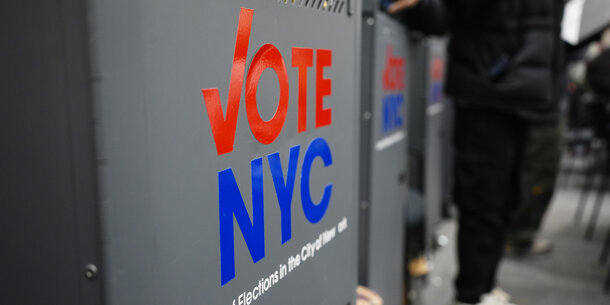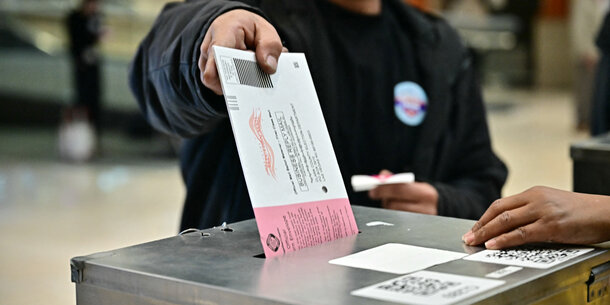Over the past 15 years, the racial turnout gap in the United States has grown dramatically. A good deal of the widening gap — but by no means all of it — can be attributed to restrictive state voting policies, such as Georgia’s Senate Bill 202, following the Supreme Court’s 2013 decision in Shelby County v. Holder, which hollowed out key protections against racially discriminatory voting rules. Perhaps just as important as formal laws and policies making voting more difficult are features in our democratic systems that leave many Americans of color underrepresented, which leads to disengagement from political participation. Campaign finance laws make it more difficult for low-income Americans to raise the money they need to run for office, the Electoral College reduces the value of most Americans’ presidential votes, and gerrymandered maps keep one party in power. To be sure, there were other reasons voters stayed home this year, like anger over inflation, that can’t be directly tied back to features of our democracy.
To fully explore these dynamics, we’ll need to wait until the national voter file becomes available next summer, along with large postelection surveys. But in Georgia, an important swing state, we already know exactly who cast a ballot in last month’s election, and the trends are somewhat concerning. (Georgia is the first state to release its voter history file, and the other states will follow.) We underscore that these results are preliminary, and it is not clear to what extent they might be true in other states. Nevertheless, understanding what happened in Georgia is important in its own right.
One takeaway is that the gap in turnout rates between white and Black voters in Georgia grew by 3 percentage points between 2020 and 2024 (for a discussion on how we calculated the number of eligible voters in Georgia in 2024, see the methodological note at the end of this piece). That’s roughly equal to how much the turnout gap grew between 2016 and 2020, but looking only at the change in the gap can be misleading. Between 2016 and 2020, turnout among both white and Black voters increased, but it increased more for white voters; that’s what drove up the turnout gap. This year, white turnout went up again in Georgia, but Black turnout declined by 0.6 points. That said, the total number of ballots cast by white and Black voters increased — from 3.16 million to 3.3 million for white voters and from 1.44 million to 1.52 million for Black voters — but the increase among Black voters did not keep up with population increases. All told, Black Georgians would have cast an additional 400,000 ballots if their turnout rate matched that of white Georgians. While we cannot know who these voters would have supported, this number is far larger than President-elect Trump’s winning margin of about 115,000 votes.
That white turnout is increasing while Black turnout is decreasing is cause for concern. It also raises important questions about how the composition of the electorate shifted. Did people who voted in the past fail to show up this year? Or did fewer new voters enter the electorate than we might have expected?
By comparing the voter file records from 2016, 2020, and 2024, we can answer this question. Just 71 percent of Black men under the age of 50 who voted in 2020 cast a ballot this year. By contrast, 81 percent of white men under 50 who voted in 2020 did so again this year. This represents a considerably higher drop-off rate for Black men relative to the 2016–2020 period. While white men under 50 were also more likely to drop out of the electorate between 2020 and 2024 than between 2016 and 2020, their dropout rate was considerably lower.
This dynamic is limited to men. While younger Black women were slightly more likely to drop off from voting between 2020 and 2024 than younger white women, there was no meaningful increase from the previous period.
When we consider the data together, we see that the growth in Georgia’s racial turnout gap was largely concentrated among younger men. To be sure, turnout also declined slightly for younger Black women and for Black men over 50. But the 3.4 percentage point decline among younger Black men is especially notable. Meanwhile, turnout increased for white men and white women across both age categories.
The entrance rate among younger Black men was also decidedly lower this year. Of course, because youth turnout was so high in 2020, we would not have expected it to be as high in 2024. The number of new white male voters under 50 was down 17 percent this year from 2020, but it was down 27 percent for younger Black men. There was a reversed gap among younger women: The number of new voters who were younger Black women was 11 percent lower this year than in 2020, while it was down 15 percent for younger white women.
In the coming months and years, we will continue to study what exactly happened in the 2024 election. But one thing is clear: Turnout among younger Black voters in Georgia suffered this year. Understanding whether, or to what extent, these declines are due to restrictive voting policies such as Georgia’s S.B. 202, justifiable feelings that the government is not working for them, or myriad other factors will be of signal importance.
It’s important to note, too, that when turnout is lower among some groups as a whole, individual-level explanations for the phenomenon do not suffice. If large and concentrated segments of the electorate believe that it isn’t worth engaging in electoral politics, that tells us more about the political environment than about individual voters. The hard work lies in understanding why (in the case of Georgia this year) participation isn’t self-evidently worth it — and doing something about it. More broadly, the widening racial turnout gap in Georgia underscores that our elections are increasingly reflecting white voices over voices of color. That’s incompatible with the multiracial democracy we aspire to be.
Methodological Note
Calculating turnout rates is a complicated endeavor. Generally, the Brennan Center calculates turnout rates by dividing the number of ballots cast by members of a given racial group by the five-year citizen voting-age population (CVAP) estimates for that group, which come from the Census Bureau’s American Community Survey (ACS). However, since there is always a lag of a few years on these estimates, the CVAP numbers currently only go through 2022. To determine the CVAP for each racial group in 2024, we had to project the 2022 numbers forward by two years. To do so, we calculated the compound annual growth rate between 2017 and 2022 and used that to estimate the CVAP in 2024.
Estimating the turnout rate among groups within racial groups is even more complex, as the CVAP is not reported separately for citizens of different ages or genders. To estimate the CVAP for, say, Black men under 50, we had to take additional steps. We used estimates from the ACS’s five-year Public Use Microdata Sample (PUMS), which provided individual-level characteristics and accompanying weights for two-thirds of ACS respondents or 5 percent of the U.S. population. Since both the CVAP and PUMS data come from the same five-year ACS survey, we were able to easily apply the estimated share of age, gender, and race among the individual records to the corresponding CVAP data with accompanying weights. We used those estimates to decompose the CVAP numbers in 2016 and 2020 in the analyses above. To decompose the forecasted 2024 CVAP numbers, we also forecast the PUMS estimates forward using the same compound annual growth rate approach. In all cases, forecasting was done at the state level for both PUMS and CVAP estimates.






